Fishing provides that connection with the whole living world. It gives you the opportunity of being totally immersed, turning back into yourself in a good way. – Ted Hughes

After such a glorious sunny evening yesterday it was odd to wake up to an overcast morning. One last porridge breakfast, and after taking down our faithful little tent for the last time, we set off into the gloomy morning. The effect of the cloud-cover was to flatten still further what was already a remarkably featureless peatland plain of heather and moss, with the track running straight into the flattened vanishing point, behind us and away before us. We shouldered our packs and set off.

We were walking along the river Thurso, which meanders through this wide land and flows into and out of Loch More, its folded banks creating ample opportunities for fishing both salmon and trout. At first our track was at some distance from the river, keeping us above the boggy wetland which stretched between us and it, but as we neared the loch we got closer, and the character of the landscape was revealed as a mass of interconnecting channels full of black peaty water and weed.
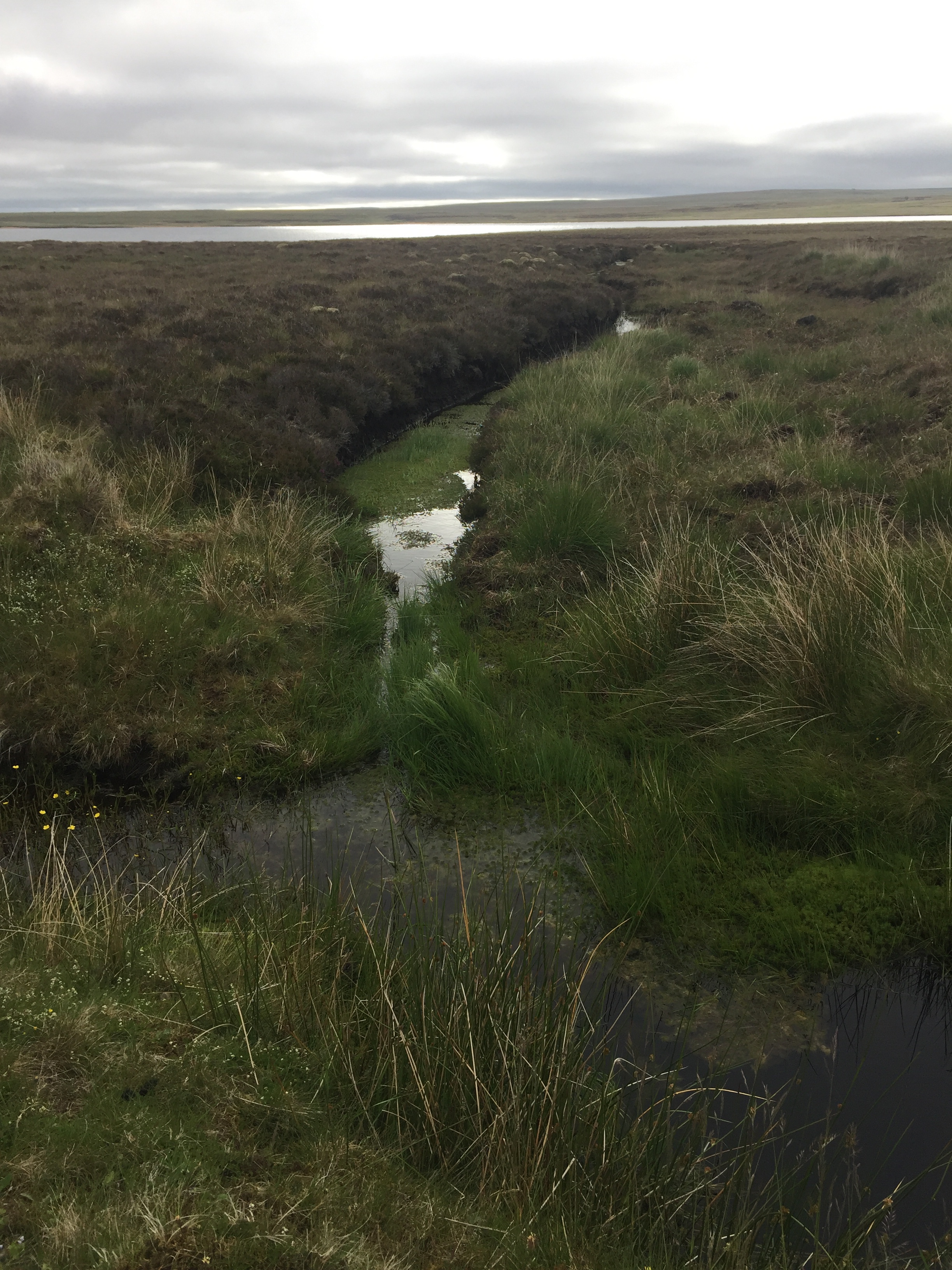
The track took us straight down to where Sleach Water feeds into Loch More. The river widened out behind a causeway, looking like a Loch itself. Because of the flatness and featurelessness we were once again appreciating tiny details, such as the ripples created by the river inflow. Otherwise the water was remarkably flat.


The hills behind us were starting to get some definition: the sky was clearing from the south, and by the time we reached the northern end of the loch a faint flush of colour was reflecting into the water.

The track followed the river Thurso out of the northern end of the loch, wider now, with significant peat bogs to the west. Their depth was visible in the ditches which had been recently dug alongside the track to keep it dry. Peat forms to a depth of 1mm/yr, so what we could see at the side of the track was thousands of years worth of decomposition of sphagnum moss and other wetland bog plants.

There was peat-cutting in evidence all along this part of the valley, the first we have seen in Scotland. There were heaps of cut turves drying,

and further on a turf-cutter lying beside a trench of relatively recently-dug fuel.

We had been walking (with dry feet!) through peatland all morning. Looking at the iGeology app the extent of the peat deposits in Caithness and Sutherland (coloured brown) was apparent. It is what makes Flow Country so very wet, and why we were so pleased to have rerouted entirely on estate tracks.

The sun had cleared away the cloud by now and what had been a flat dreary landscape was transformed by the now startling shade of blue of the water masses.

In this transmuted world the rivers became glittering ribbons divided into fishing beats along which the odd fisherman could be seen casting peacefully.
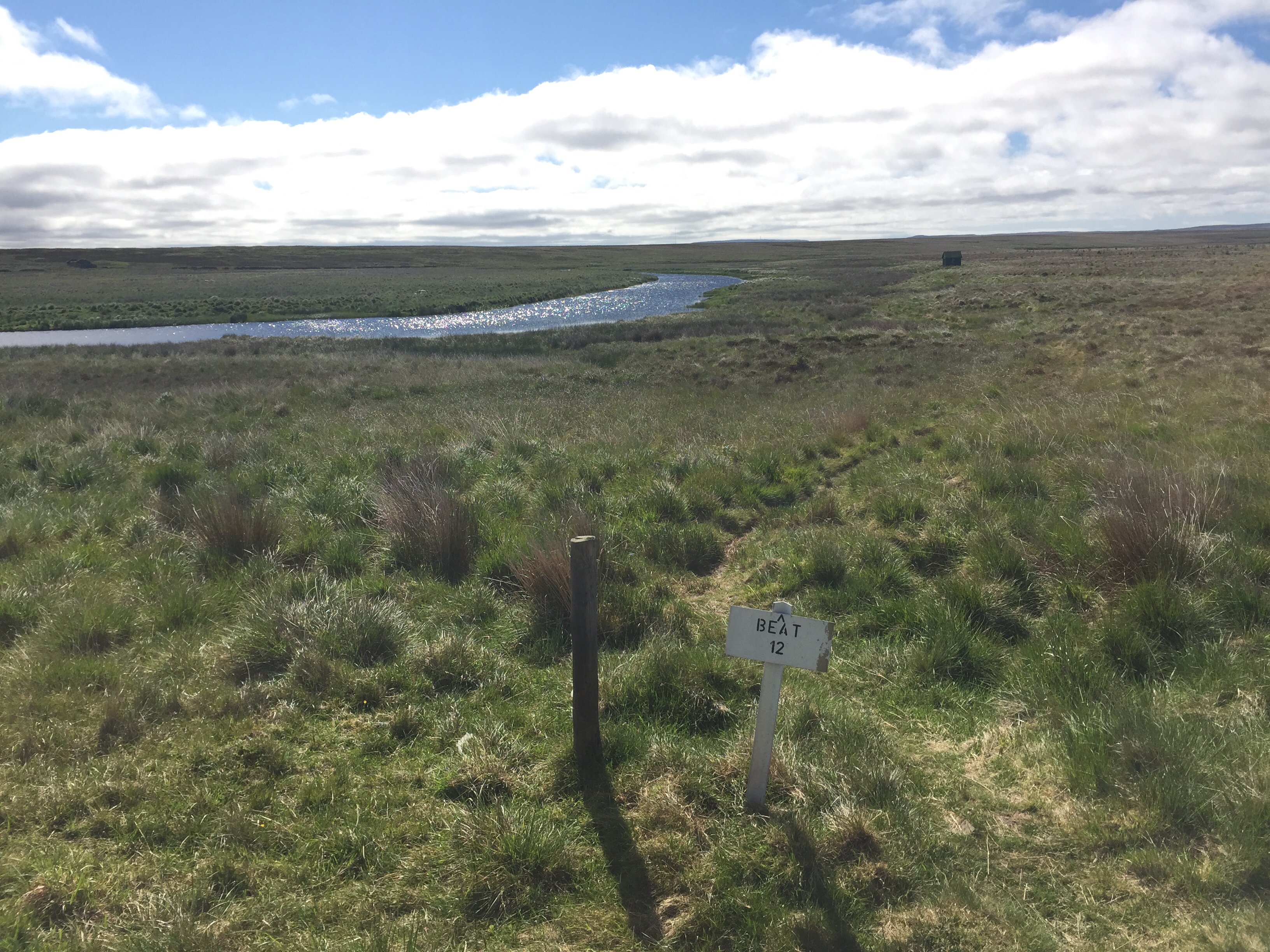
And by the time we reached the tiny hamlet of Strathmore Lodge, the Thurso has achieved a shade of blue which the more we looked at it the harder it seemed to believe the evidence of our eyes.

By the side of the road was another one of those tiny cemeteries which must have served the immediate community here.
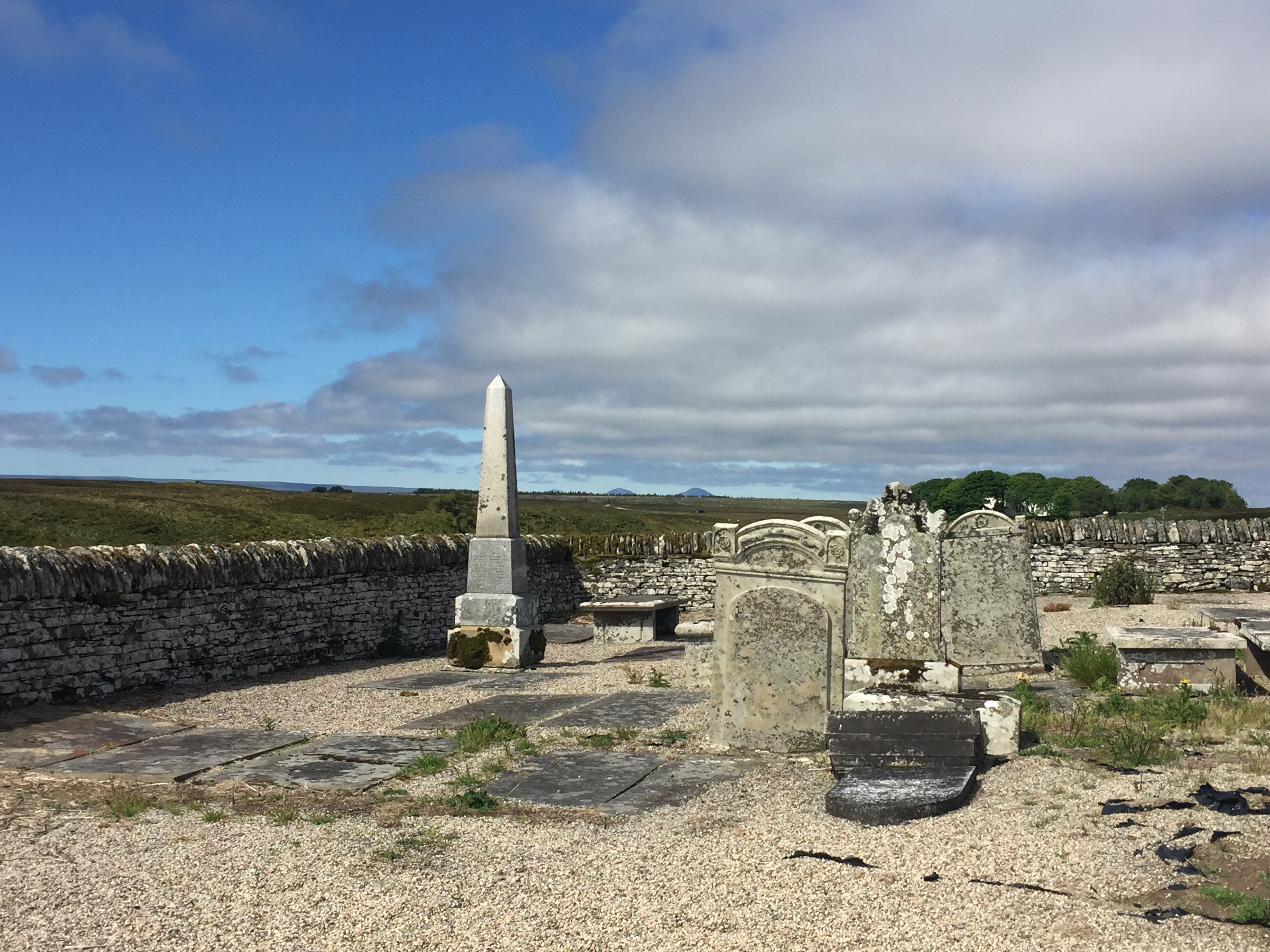
It recalled the walled garden of Strathmore Lodge, but this was the estate of the dead. Was it unusual that the cemetery had no gate? On the outside a double sheep style led up to a break in the coping stones,

and on the inside a set of wide steps lead down from the top of the wall.

We passed several cars on their way up to beats on the river. Long salmon rods strapped to the front of the bonnet of the car extended back over the roof. Many of the fishermen were smartly dressed in shirt and tie, and one group had come all the way from Luxembourg to fish these rivers.
The track met a minor road where the peat deposits ended, and from this point on the landscape changed. We crossed the river Thurso one last time, and the old red sandstone ancient seabed formations were visible,

rock easily quarried into thin slabs which could be easily utilised, as just a few miles away in the Orkneys, for a variety of purposes such as fencing and creating little farming enclosures.



For people used to see standing stone slabs only used as gravestones, the effect was slightly disquieting. It made the landscape look Neolithic.
We came across one of these quarries just on the east side of the busy A9. We couldn’t see into the bottom of it, but impressive crashing noises were coming from the machinery, and there were huge piles of slabs teetering on the brink of the pit.

Further along the road teams of silage contractors were working flat out to get the silage off the fields and into a clamp. My silage harvesting expert explained the process: it is an immensely skilled job and this team were very slick. Tractors with trailers tag-teamed each other, the drivers getting cricks in their necks as they twisted round backwards – while driving forwards in a dead straight line – to check that the chute from the silage harvester with which they were keeping parallel was depositing the chopped grass into the high-sided trailers. Ahead of them in the fields, a hay-turner combined two rows into one to create wide corridors for the tractors to drive down.
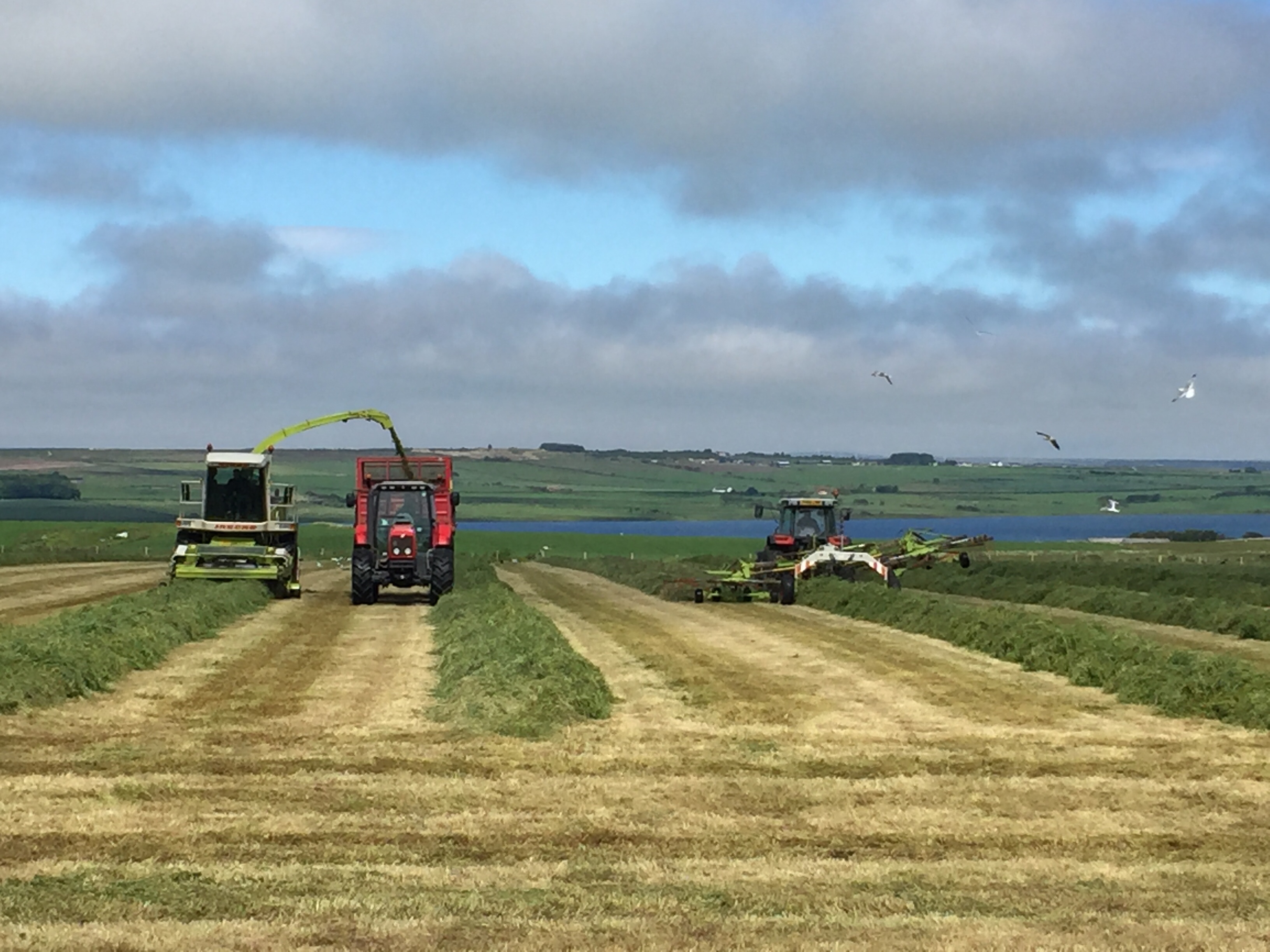
Our job was very different. We just had to walk.

It had been a long road-walking day but it was nearing its end, and we were aware that there was only one day to go. A bittersweet thought. The Watten village store provided icecream before the last push up the road to our luxurious B&B.

It was not only people who come here to rest: also staying was a falconer, who had brought his harris hawk to clear some bothersome seagulls who were nesting on a local roof, and had parked it in the garden next to his van, the side of which advertised amongst other services “bird solutions”.
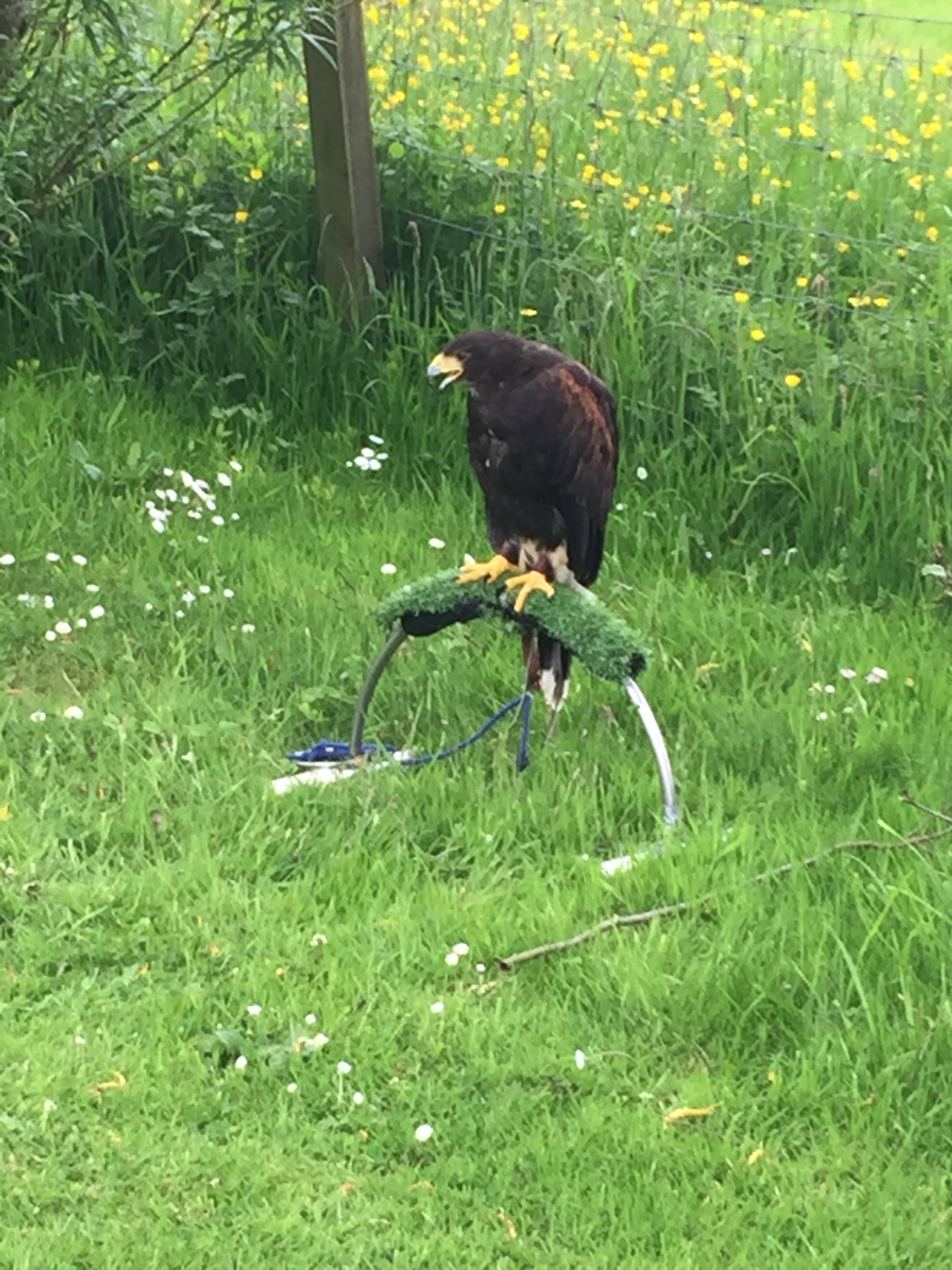
One final treat of the day. We were given a lift down the road by our kind host to the Brown Trout Inn where we had an appointment. Also staying in Watten this week, by huge coincidence, is Alan Blair from Kinlochleven and his friend Garry, both up fishing here for trout on Loch Watten. It was a lovely reunion, and a great way to spend our last evening on the End-to-End Trail.

The last day cometh, and so the end of your fabulous journey and delicious blog. Thank you for sharing your steps, thoughts, knowledge and infectious enthusiasm! I can only think how lucky your students are to have you guiding them – outdoor lessons from now on! Good luck tomorrow – enjoy your mahussive achievements and we’ll raise a glass to celebrate with you 🍻 xx
LikeLiked by 1 person
Thank you so much, Niki!
LikeLike
Huge congratulations 👏👏. Enjoy your last day! I’m going to miss the blog.?Hopefully you are still up to meet in Malvern on 6 July 🤞.
LikeLiked by 1 person
Thank you, Heidi! It’s been wonderful to have you with us, from so very far away.
LikeLike
I’ve followed every blog – loved your descriptive writing and can’t believe it’s the last day. I got a bit lost around the trapped night between rivers and Ullapool though, will have to read again! I’m taking my young people to Dunnet Head in August and will think of you again then. A massive WELL DONE!
LikeLiked by 1 person
Thank you so much Amanda, and for all your support. I would recommend not forgetting to pack the midge nets!
LikeLike
Enjoy your last day! A wonderful achievement, going to miss your beautifully written blog with the snapshots of Britain we have had all the way. Xx
LikeLiked by 1 person
The temptation to turn and walk back again is very strong!
LikeLike
And thank you, Susie not just for this message but for all of them, and for the huge help that you have been to us along the way. Xxx
LikeLike